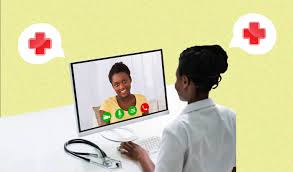The Benefits of Telemedicine for Remote Healthcare

Telemedicine has revolutionized the healthcare industry by making medical services more accessible, especially for people in remote or underserved areas. It utilizes technology to connect patients with healthcare providers through video calls, phone consultations, and online health platforms. This advancement has significantly improved healthcare delivery, providing numerous benefits for both patients and medical professionals. In this article, we will explore the many advantages of telemedicine and how it enhances remote healthcare.
- Increased Access to Healthcare
One of the most significant benefits of telemedicine is its ability to provide healthcare access to individuals living in remote or rural areas. Many communities lack nearby healthcare facilities, making it difficult for residents to receive timely medical attention. Telemedicine bridges this gap by allowing patients to consult with doctors without the need to travel long distances. This is particularly beneficial for individuals with mobility issues, elderly patients, and those without reliable transportation.
- Cost-Effective Healthcare Solutions
Telemedicine reduces the financial burden associated with healthcare by minimizing travel costs, reducing hospital visits, and preventing unnecessary emergency room trips. Patients can receive medical advice from the comfort of their homes, which helps lower expenses related to transportation, childcare, and time off work. Additionally, healthcare providers can offer services at lower costs due to reduced overhead expenses.
- Improved Convenience and Comfort
With telemedicine, patients can schedule appointments at their convenience without the need to sit in crowded waiting rooms. This level of comfort is especially helpful for individuals with chronic illnesses or those requiring regular follow-ups. It also allows for greater flexibility in managing healthcare needs while balancing work and personal responsibilities.
- Timely Medical Assistance
Telemedicine enables quicker access to medical care, reducing the time spent waiting for in-person appointments. In many cases, patients can connect with healthcare providers within minutes or hours, allowing for early diagnosis and treatment. This is crucial in managing conditions that require immediate attention, such as infections, minor injuries, and mental health concerns.
- Continuity of Care

For patients with chronic conditions such as diabetes, hypertension, or heart disease, telemedicine facilitates regular monitoring and follow-ups. Doctors can track progress, adjust medications, and provide lifestyle recommendations without requiring frequent physical visits. This continuous interaction helps in better disease management and improved patient outcomes.
- Reduced Risk of Infections
By avoiding in-person visits to clinics and hospitals, patients reduce their exposure to contagious diseases, including COVID-19, flu, and other infections. This is particularly important for individuals with weakened immune systems, pregnant women, and elderly patients who are more vulnerable to infections.
- Enhanced Access to Specialists
Telemedicine allows patients to consult with specialists who may not be available locally. For example, individuals in rural areas can receive expert advice from cardiologists, dermatologists, or mental health professionals through virtual consultations. This broadens access to specialized care that would otherwise be difficult to obtain.
- Better Management of Mental Health

Mental health services are often limited in remote areas, leading to untreated conditions such as depression and anxiety. Telemedicine offers easier access to mental health professionals, allowing patients to receive counseling and therapy without the stigma sometimes associated with visiting a clinic. Virtual sessions can provide a safe and comfortable environment for discussing personal issues.
- Improved Patient Engagement and Education
Telemedicine platforms often include educational resources that empower patients to take control of their health. Through online portals, patients can access health records, receive medication reminders, and learn about disease management strategies. This promotes better adherence to treatment plans and a proactive approach to healthcare.
- Emergency Support and Remote Monitoring
Advancements in telemedicine technology now include remote monitoring devices that can track vital signs such as blood pressure, glucose levels, and heart rate. These devices provide real-time data to healthcare providers, enabling them to intervene promptly in case of an emergency. This can be life-saving for patients with chronic conditions or those at risk of sudden health deterioration.
Conclusion
Telemedicine is transforming the way healthcare is delivered, offering numerous benefits such as improved access, cost savings, and enhanced patient comfort. By leveraging technology, patients in remote areas can receive quality healthcare without the challenges of distance and travel. As telemedicine continues to evolve, it holds great promise for making healthcare more inclusive, efficient, and accessible for all.
